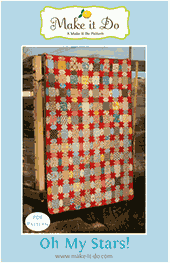Posts Tagged ‘make it do’
Spring Cleaning Your Bedding: Washing Down Comforters
I change out clean sheets on the beds once a week. It’s called “Clean Sheet Day” at our house and I love it. I could swear I sleep better on clean sheet day!
But once a year in the Spring, the bedding gets special treatment in the form of spring cleaning.
This week and next I will cover several topics about bedding, beginning today with down comforters. This post was inspired by a conversation I had with my sister-in-law the other day. She was surprised when I said something about washing our down comforters. She never thought you could wash them… and was curious how.
I love our down comforters so much that we have one on every bed in our home. They keep us toasty warm in the winter enabling us to keep our heat low at night, saving us big bucks on our heating bill. The only time of year we don’t use our comforters is in the heat of summer. Other than that, our comforters keep us quite temperate throughout the year.
Since I don’t want to strip the natural oils from the feathers of the down, I limit the washing of our comforters to once a year. To keep them as clean as possible in between washings I use a comforter cover.
Cleaning bedding as large as a down comforter requires a large front load washer. My large capacity front loader handles our queen-sized comforter… but if you have a top loader or a smaller washer… do what I used to do and head to the laundry mat.
I always wash our comforters, one at a time, on the gentle cycle using a gentle laundry detergent in a small amount. I always add a second rinse cycle when washing comforters as well. You want to make extra sure you get all of the soap out.
Next comes the dryer… and the important part:
Add some clean tennis balls or a clean canvas shoe (no buckles or sharp metal!) to the dryer along with your comforter. The tennis balls will knock around and fluff up the down. I always dry my comforters on low heat. It takes a while, but isn’t as hard on the down.
Once the dry cycle is complete, I remove the comforter and hold it up to the light. If I see any clumps it means there is still some dampness (not good) so it goes back in for a little more drying. If the day is nice and warm, the comforter could also go outside to blow in the breeze. There is nothing like sunshine and breeze to make something feel really clean.
So there’s the first in my little series on bedding. I think I love my bed a little more than is healthy… after a long day, there is nothing quite so nice.
O bed! O bed! Delicious bed!
That heaven upon earth to the weary head.
~Thomas Hood
Succession Planting in the Vegetable Garden
This week, I finally did a little planting in the vegetable garden. It’s been snowing so much this spring… there have been very few opportunities. I planted some Buttercrunch and Red Sails Lettuce seeds. And Spinach and Arugula from seed as well.
These plants could not be easier to grow from seed. Plus starting from seed always saves lots of money. One little seed packet costs about $2 for more seeds than we can eat in a year!
I sow my seeds around the outside edge of my raised cedar garden boxes. That way I can still plant my tomatoes or peppers in the center of the boxes without getting in the way. By the time my tomatoes are big, the spinach has been eaten. Plus they look so pretty planted that way.
My favorite trick is to succession plant. That means I try to plant the amount of lettuce or spinach I think we will eat in a one to two week period, then I plant a small strip of seed, usually about two feet. In a week or two I’ll plant another strip. It’s smart to place plant markers at the beginning and end of the strip you’ve planted. That way you know where to start the next strip if the first hasn’t germinated yet.
Yes, in reality I always plant more than we can really eat, but it’s a technique that greatly reduces waste in my garden and keeps us in good supply of the delicious plants that we love… and won’t keep.
In my area I can succession plant these cold loving crops for about 2 months. Typically I am planting my first crops in late March and ending in late May.
One other smart planting tip: Try to crop rotate. I planted lettuce in the same bed for a few years and noticed a sharp upsurge in pests. If you keep your plantings on the move each year, you can keep the pests confused. This is especially helpful if you are trying to grow an organic vegetable garden like I am.
I hope a few of these tips are helpful. Happy planting!















